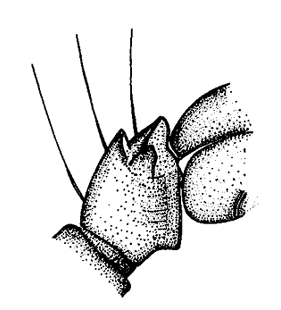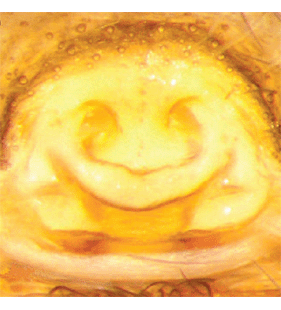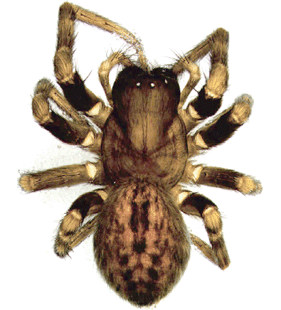Badumna longinqua (L. Koch, 1867)
Description
Male
Embolus long and sigmoid.
Anterior median eyes about 1.4x larger than anterior lateral eyes.
Female
Epigyne with undivided depression and 2 lateral denticles.
Body length female: 15.0 mmAdditional information
Introduced in Germany, in hothouses, in the United Kingdom also established in urban areas.
This species of Australian origin is not native to Europe (alien species). It had been introduced to Europe at least once and could establish meanwhile
Distribution
Figures
Distribution List
"No references" does not mean that the species does not occur in this country, but that we have not yet inserted the reference for it. We are working on it.
References
Gallon R (2023) Badumna longinqua (L. Koch, 1867) an Australian spider established outside in Britain. Newsletter of the British Arachnological Society 158, SRS News 107: 3-5 ![]()
Haddad C R, Foord S H (2021) Future climate may limit the spread of the Australian house spider Badumna longinqua (Araneae: Desidae) in South Africa. Journal of Arachnology 49: 332-339 ![]()
Kielhorn K-H, Rödel I (2011) Badumna longinqua nach Europa eingeschleppt (Araneae: Desidae). Arachnologische Mitteilungen 42: 1-4 ![]()
Lehtinen P T (1967) Classification of the cribellate spiders and some allied families, with notes on the evolution of the suborder Araneomorpha. Annales Zoologici Fennici 4: 199-468 ![]()
Ubick D, Paquin P, Cushing P E, Roth V (eds.) (2005) Spiders of North America: an identification manual. American Arachnol Soc Keene (New Hampshire), 377 p
WSC (2025) World Spider Catalog. Version 26. Natural History Museum Bern, online at http://wsc.nmbe.ch (28.2.2025) doi: 10.24436/2 ![]()
Updates
| 10-12-2023 | Distribution update | Detail |
| 10-12-2023 | Datasheet update | Detail |
| 10-12-2023 | Distribution insert | Detail |
| 21-10-2023 | Image insert | |
| 23-08-2022 | Datasheet update | Detail |
| 19-03-2020 | Distribution update | Detail |
| 26-02-2015 | Distribution update | Detail |
| 11-06-2013 | Datasheet update | Detail |
| 11-06-2013 | Image insert | |
| 11-06-2013 | Distribution update | Detail |








